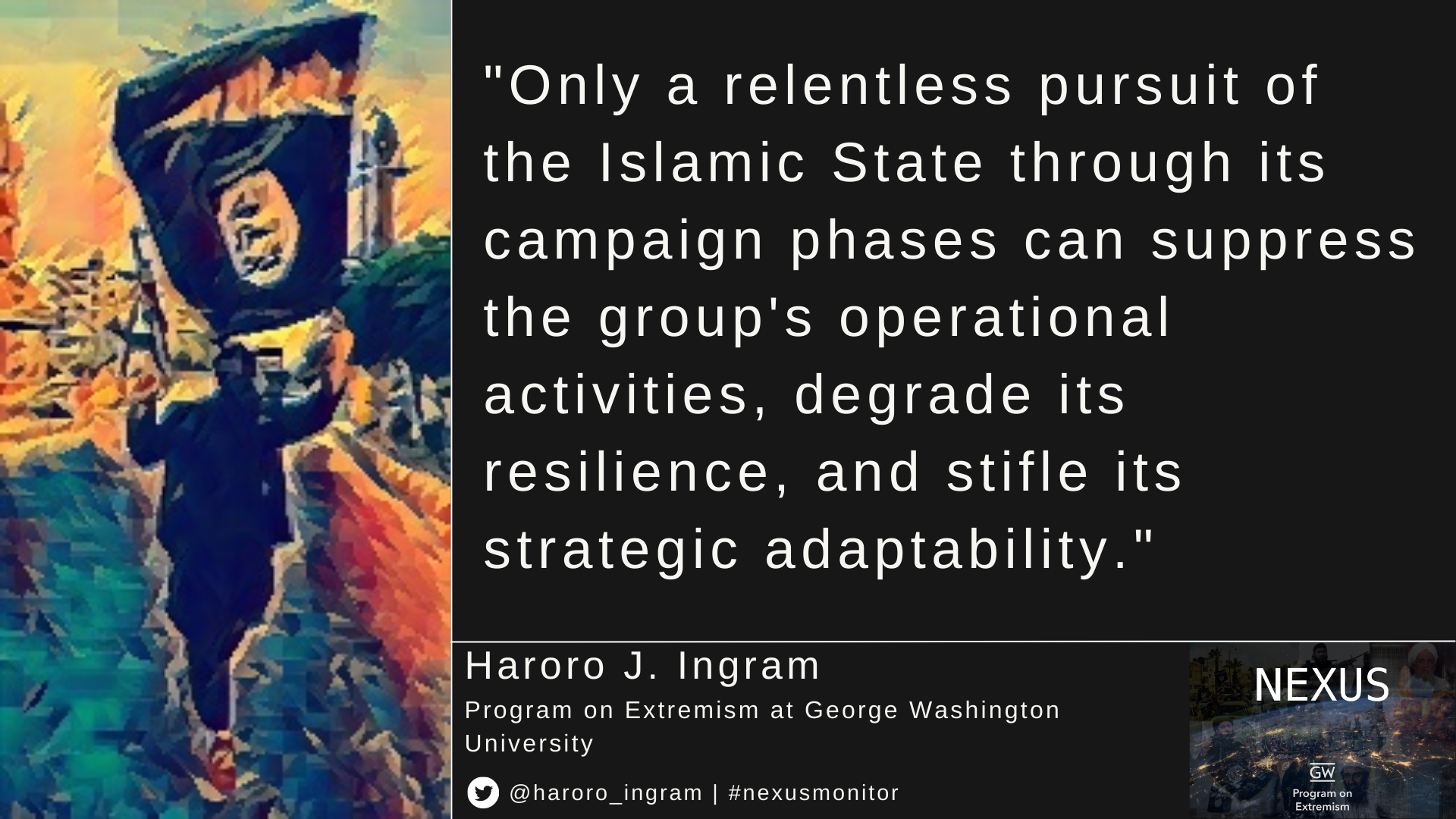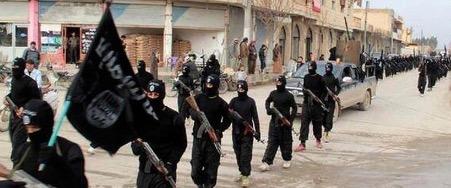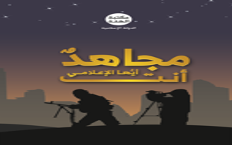CONSIDER, FOR A MOMENT, the extraordinary challenges the Islamic State’s leaders and strategists have had to confront throughout the movement’s history. Since Abu Musab al-Zarqawi took his small cadre from Jordan to camps in Afghanistan and then the battlefields of Iraq, the group’s aspirations to establish not just an Islamic state, but a transnational caliphate, have pitted them against an array of adversaries – from local tribes and national governments, to international coalitions led by the greatest military forces the world has known. At every step of the way, the Islamic State has had to confront military, technological, financial, personnel, and resource disparities that should make their mere survival highly unlikely. Yet, the overall trendline from the 1990s to the 2020s reveals a group that has not only sustained, but expanded the fronts of its forever wars.
The Islamic State attributes this ability to its unwavering adherence to the prophetic manhaj (method) for establishing an Islamic state. It is an approach characterized by a phased progression of politico-military activities that Che Guevara, Mao Tse-Tung, Bernard Fall, or Robert Taber would immediately recognize as the Islamic State’s method of insurgency. The editorial in An-Naba’s new year edition (Issue 372) proudly declared that the Islamic State applies a “radiant jihad on the prophetic method” that is “the same jihad of the first prophetic state, which was victorious in most of its battles amid difficult circumstances in which the disbelievers had numerical, material, and military superiority.” From multinational coalitions, to local civil society groups, and even jihadi rivals, some of the worst strategic miscalculations by the group’s adversaries were the product of ignoring or misinterpreting the group’s approach to insurgency. Policymakers and practitioners should routinely return to the Islamic State’s insurgency canon as the group’s playbook and primary export to help reduce ‘strategic shock,’ maximize efficiencies of effort, and improve partner capacity building. Below are a selection of principles drawn from fourteen texts in the group’s insurgency doctrine that offers policymakers key insights into this central driver of the Islamic State’s decision-making.
Islamic State militant with a flag.
The Pen & The Sword: Competitive Systems of Meaning & Control
The Islamic State views its struggle against materially superior adversaries as a dual contest. The first contest is for control of territory, resources, and the support of the population in which the Islamic State looks to implement a competitive system of control via politico-military operations. Deploying a mix of violence, top-down politics, and bottom-up governance activities, the Islamic State seeks to render their adversary’s competitive systems of control dysfunctional to then fill the resulting void.
The second contest sees the Islamic State’s use propaganda and other influence activities to project a competitive system of meaning that acts as a ‘lens’ through which the conflict and its actors are perceived. Like its competitive system of control, the Islamic State’s competitive system of meaning does not exist in a void and must ‘outcompete’ the messaging and other influence efforts of adversaries. Abu Musab al-Zarqawi succinctly describes this dual contest as “…an arena of jihad in which the pen and the sword complement each other.”
While engaged in this dual contest, the fundamental concern for the Islamic State is how to overcome its vastly superior opponents for the support of contested populations and control of territory and resources. For this, the Islamic State proposes a progressive, phased approach that begins with, "…immigrating to a land with a weak central authority to use as a base where a jama’ah [organization] can form, recruit members, and train them. If such a land does not exist or hijrah is not possible, the place can be formed through long campaigns of nikayah (injury) attacks carried out by underground mujahid cells. These attacks compel apostate forces to partially withdraw from rural territory and regroup in major urban regions. The jama’ah would then take advantage of the situation by increasing the chaos to a point leading to the complete collapse of the taghut regime in entire areas, a situation some refer to as “tawahhush” (mayhem). The next step would be to fill the vacuum by managing the state of affairs to the point of developing into a full-fledge state, and continuing expansion into territory still under control of the taghut."
Islamic State phased approach.
The tamkin (consolidation) threshold – where the Islamic State starts controlling territory and populations – is crucial because it represents the point in which the Islamic State’s posture pivots from prioritizing guerrilla politico-military operations to increasingly hybrid/conventional politico-military operations. The perpetual challenge is how and when to transition through these phases either over the tamkin threshold when conditions are bullish, or below the tamkin threshold when conditions warrant a re-focusing on unconventional operations.
These are some of the overarching principles that guide every aspect of the Islamic State’s activities, and they have important implications for policymakers and practitioners. First and foremost, it is vital to actively compete against the Islamic State’s systems of control and meaning with synchronized actions and messaging. However, what is required to outcompete the Islamic State’s control and meaning efforts will shift depending on the campaign phase in which it is currently operating. This is just one reason why a solid working knowledge of the Islamic State’s manhaj is vital to appropriately monitor the operational trends that characterize each campaign phase and the signatures of a pending strategic transition.
Injury, Mayhem, & Decisive Minorities: Guerrilla Operations
Throughout its history and across its global affiliates, the Islamic State has deployed a wide variety of guerrilla violence, politics, governance, and propaganda activities with all of it ultimately channeled towards causing nikayah (injury) to its enemies and creating an environment of tawahhush (mayhem). Violence, which the Islamic State wields with ruthless brutality, is deployed to not only weaken and coerce its adversaries as well as render their systems of control dysfunctional but incite violence from them – especially if it is misguidedly retributive violence against the Islamic State’s communities of potential support. Nevertheless, as the Islamic State acknowledged in the Fallujah Memorandum, “There is no doubt in our mind that limiting jihad to military efforts alone is foolish.” And so the group has demonstrated an enthusiasm for deploying the full spectrum of guerrilla politics and governance activities including bribing government officials, extorting the population, and even commissioning lessons learned assessments to improve its community relations.
Throughout its insurgency canon and time and again in practice, the Islamic State recognizes that to fuel psychosocial and strategic conditions that favor it over its opponents, guerrilla operations must trigger responses from its adversaries that then drive desired second and third order effects. A particularly powerful force multiplier of these dynamics is the Islamic State’s targeting of those segments of the population who, due to their status (e.g. politician), access to resources (e.g. businessperson), and/or identity (e.g. tribal leader), exercise a disproportionate influence in the community. These decisive minorities become targets for the Islamic State who recognize that “the endorsement and contributions of some people will inspire loyalty in others.” So, the Islamic State will court, protect, and empower those decisive minorities that support it, and intimidate or kill those who support their opponents. This ultimately works to further fuel psychosocial conditions of crisis and a strategic context of deadly instability.
Amidst a symphony of violence, growing rumors of a shadow government, and waves of targeted killings, the Islamic State grinds towards force symmetry and the tamkin threshold. For those living and working under these conditions, the experience is often overwhelming. An understanding of the Islamic State’s method can help practitioners to decipher what can often seem to be simply bloody chaos. Once armed with a method to decipher the madness, policymakers and practitioners are better positioned to identify the tactical and operational signatures that are representative of broader strategic shifts and vice versa. For example, the killing of security personnel, local politicians, businesspeople, and religious or tribal leaders can, at least initially, seem random and unrelated to a potentially burgeoning insurgency. However, if local partners are trained to understand the rationale of Islamic State’s guerrilla operations, it can help them to identify the problem early and work towards extinguish the space and time a guerrilla campaign desperately needs to build momentum.
Islamic State guerrilla fighters.
Tamkin & Statehood: Co-option & Propaganda of the Deed
After years of grinding guerrilla operations, one of the most difficult challenges facing any insurgency is when and how to conventionalize its politico-military operations. These periods of transition are when an insurgency is most vulnerable: move too fast or too slow, over-commit or under-commit resources, and disaster follows. When the Islamic State swept across Syria and Iraq in 2014, the world was shocked at the speed with which the group implemented a highly bureaucratized system of government seemingly from the ground up and in a matter of weeks. The reality is that the Islamic State was able to implement a full-spectrum, normative system of control by co-opting existing government institutions and their staff. As stated in Principles in the Administration of the Islamic State, the Islamic State stressed the importance of “preserving the capabilities that managed the production projects under the prior governments, whilst taking into account the need to place strict oversight and an administration affiliated with the Islamic State.”
In addition to co-option, the Islamic State rapidly declares statehood to harness the potentially profound symbolic and practical impact of the propaganda of the deed. Indeed, the speed with which the group declares statehood is a trademark of the Islamic State’s transition over the tamkin threshold. The logic is explained in Informing the People About the Birth of the Islamic State of Iraq (2007) which states that, “declaring the state will entail Islamic political weight, springing from a sincere jihadist experience” adding that “the new state will gain a well-deserved historic legality.” In summary, the combination of co-option and state declaration can be, to varying degrees, an attempt by the Islamic State to present a front that belies the vulnerabilities of this period of transition.
Perhaps the most significant implication for policymakers and practitioners is the need to maintain pressure on the Islamic State as it progresses across the tamkin threshold. The Islamic State’s propaganda may show the group rapidly implementing a highly bureaucratized system of government and declaring the establishment of its state, but especially early on, this is mostly to convince local populations that life is back to normal, and convince the outside world that locals have embraced the group. The reality is often starkly different, and this can be just a ploy to buy time and space to implement its system of government. It highlights another important lesson for practitioners: beware of succumbing to and inadvertently reinforcing the Islamic State’s propaganda.
Islamic State fighters in Raqqa.
Media Jihad: Perception Shaper, Support Polarizer, Force Manipulator
The veneration that the Islamic State holds for the multifaceted value and utility of propaganda to fuel its forever wars is difficult to exaggerate. The group centralizes the role of propaganda and other influence activities in its insurgency method, first and foremost, as an indispensable tool for shaping the perceptions and polarizing the support of contested populations. As the Islamic State’s media doctrine declares: “The media jihad against the enemy is no less important than the material fight against it.” After all, propaganda is the primary means by which the group projects its competitive system of meaning via narratives that present the Islamic State as the champions of Sunni Muslims, and the only hope for solving their crises and protecting them from enemies.
To complementary ends, the Islamic State also deploys propaganda as a force multiplier for its politico-military activities, i.e. its competitive system of control, and a force nullifier against the politico-military activities of its adversaries. Such is the versatility and multidimensionality of its media jihad, the Islamic State uses propaganda messaging to strategically unify and operationally synchronize across its increasingly complicated and geographically dislocated transnational organization. The bayat campaign after the death of its leaders, and calls for attacks on prisons as part of regular global ‘breaking the walls’ campaigns, are examples of how the Islamic State potentially uses propaganda to coordinate affiliate actions.
Three important implications emerge for policymakers and practitioners. First, the Islamic State’s propaganda outputs must be monitored and analyzed within the context of the group’s broader campaign efforts and objectives. With this perspective, the Islamic State’s propaganda outputs emerge as more than just forays in the information theatre, but intimately intertwined influence efforts designed to amplify the reach and impact of its politico-military activities. Second, because of this close relationship, thematic and technical shifts in the Islamic State’s messaging can offer important signals that pre-empt broader strategic and organizational transitions. For instance, if the Islamic State controls territory but its propaganda is thematically prioritizing narratives that highlight the value of guerrilla operations, then the group may be internally preparing for a transition. Third, strategic communications that expose the Islamic State’s say-do gaps can be deeply impactful. This is because say-do gap messaging seeks to dissolve the linkages between the Islamic State’s competitive system of meaning and its competitive system of control. There are countless opportunities to expose the Islamic State’s say-do gaps – whether it is false promises to recruits, abuse of fellow Sunnis, or the hypocrisy of leaders – and these need to exploited with a regular drumbeat of messaging.
Islamic State's propaganda doctrine.
Patience: Redefining Success & Failure
From its heartlands in Iraq and the deserts of Syria, to the jungles of Congo and the mountains of Afghanistan, the Islamic State’s affiliates are all operating to varying degrees below the tamkin threshold. This may seem a significant decline from the dizzying heights of its territorial caliphate, and it is. But holding onto such a conclusion also ignores the realities of the Islamic State’s method of forever war: the metrics of success or failure are specific to the campaign phase. Once the group transitions, the game changes and so do the goal posts.
As Abu Muhammad al-Adnani reminded the Islamic State’s enemies: “And would we be defeated and you be victorious if you were to take Mosul or Sirte or Raqqah or even take all the cities and we were to return to our initial condition? Certainly not! True defeat is the loss of willpower and desire to fight.” Only a relentless pursuit of the Islamic State through its campaign phases can suppress the group’s operational activities, degrade its resilience, and stifle its strategic adaptability.







